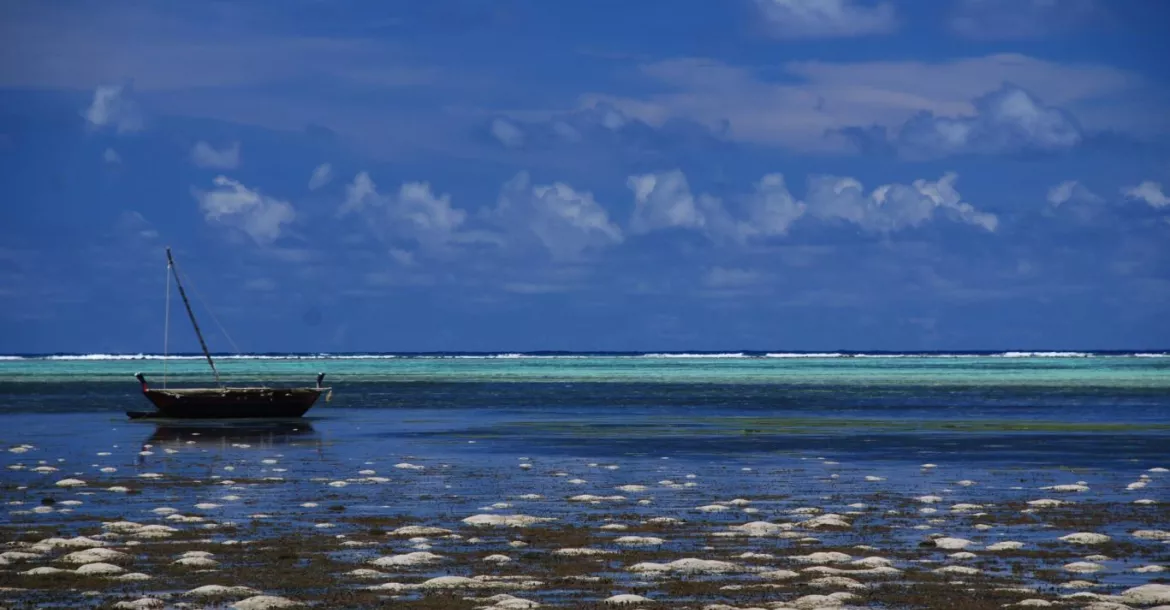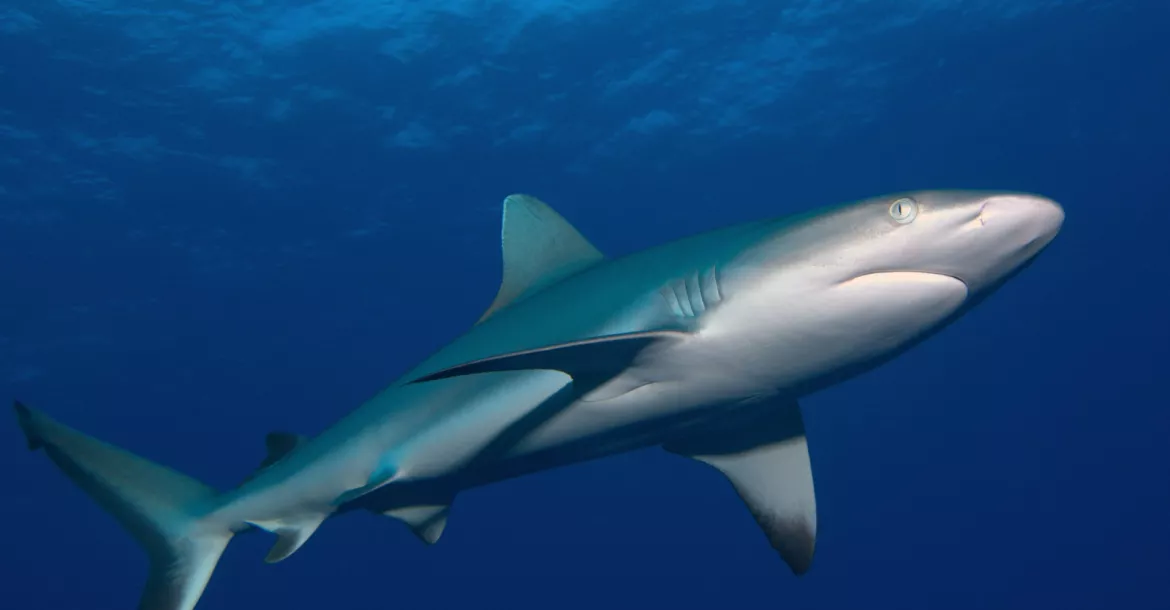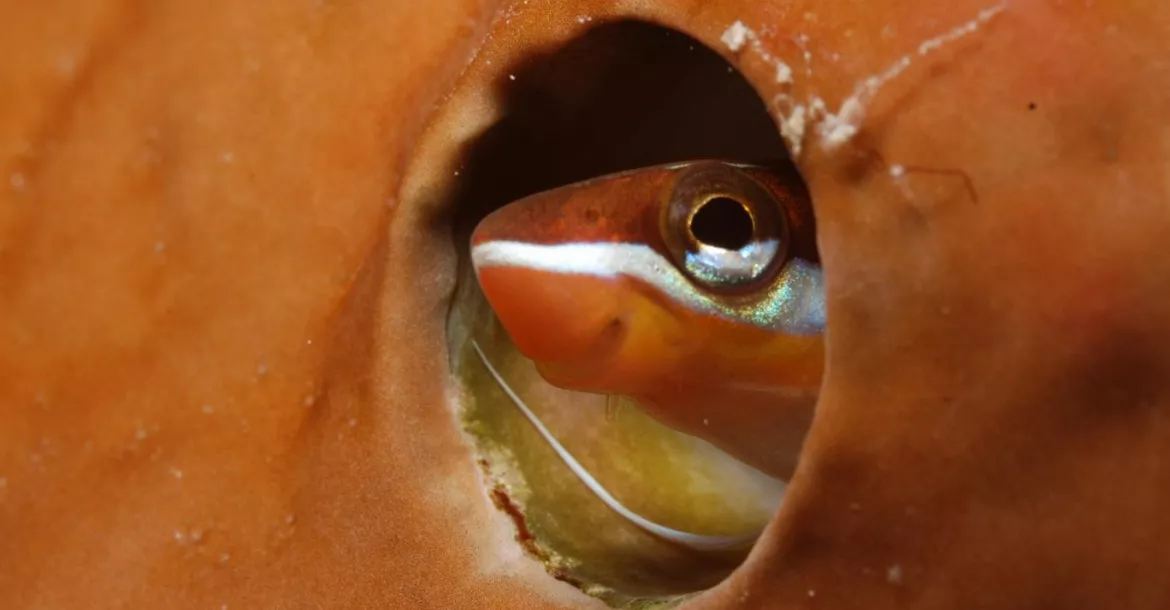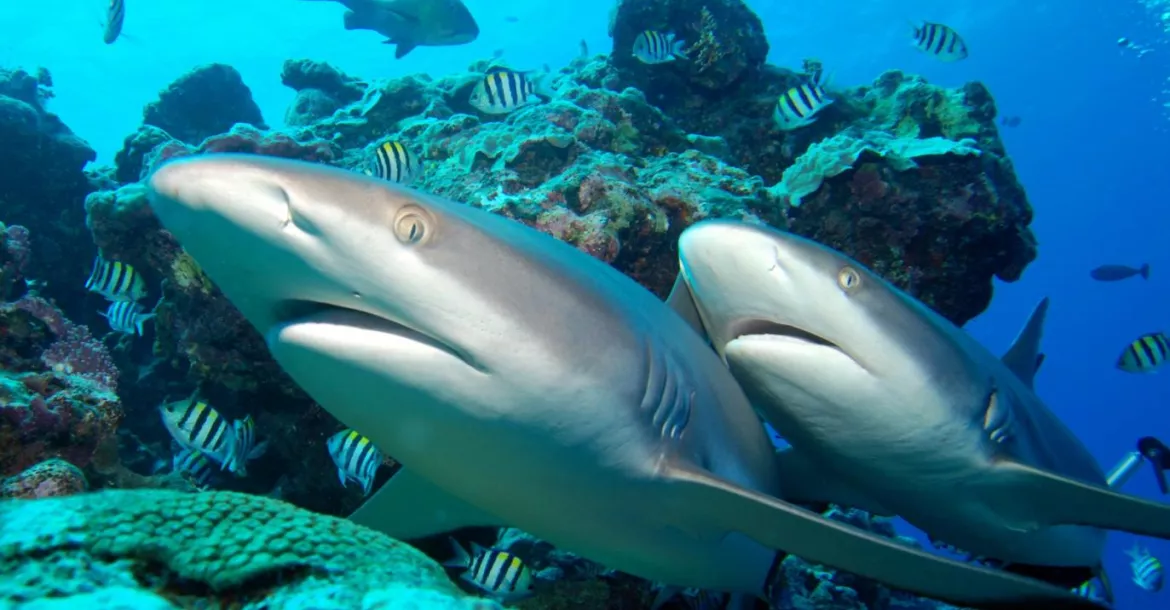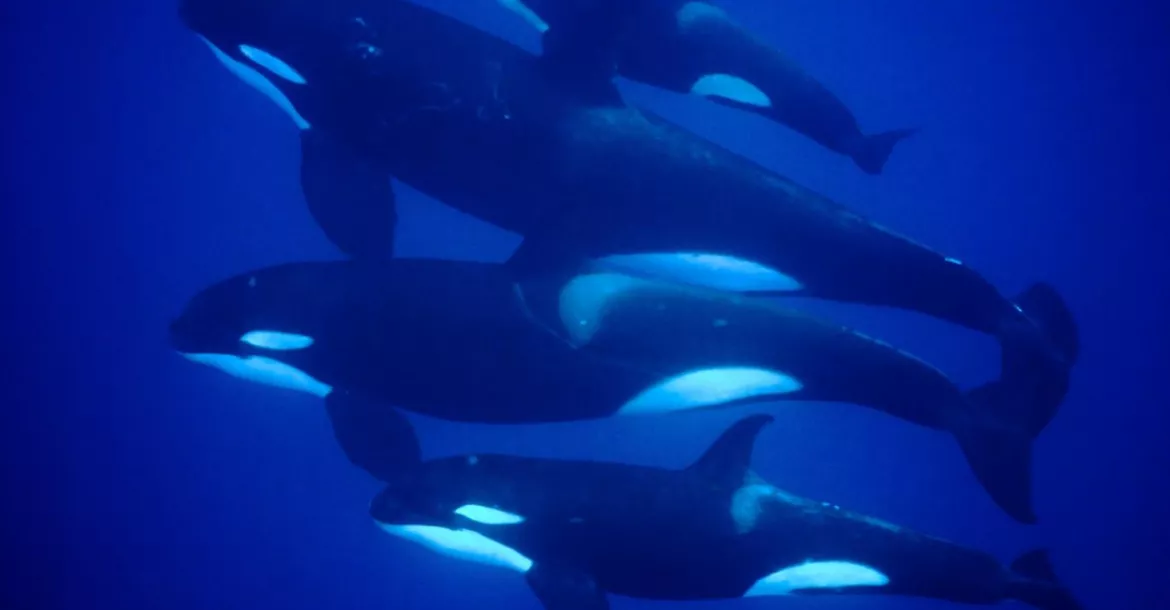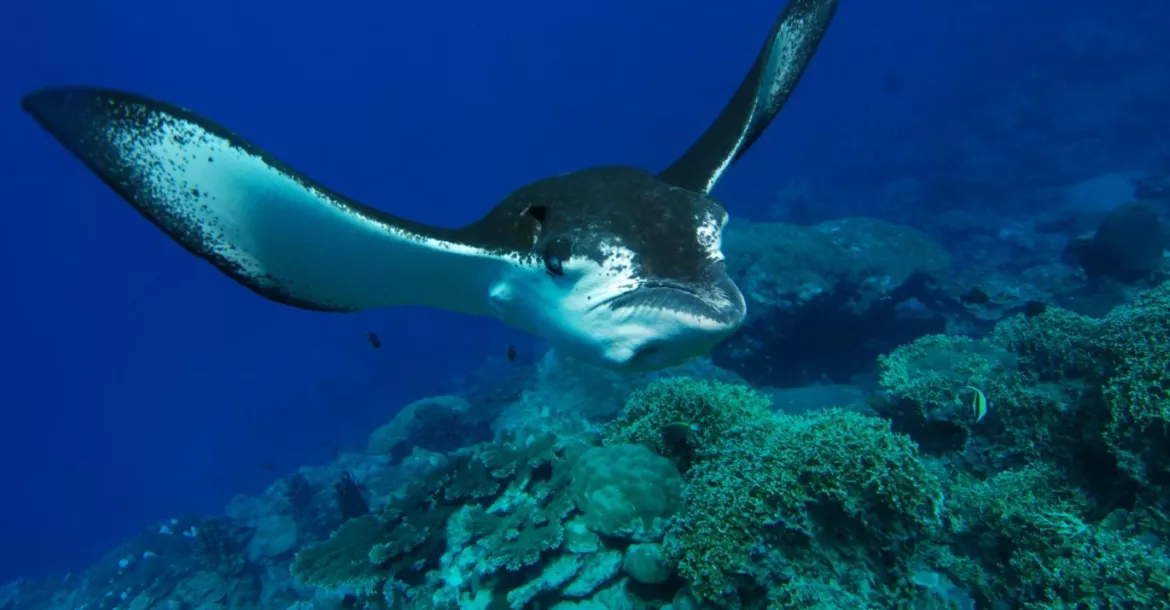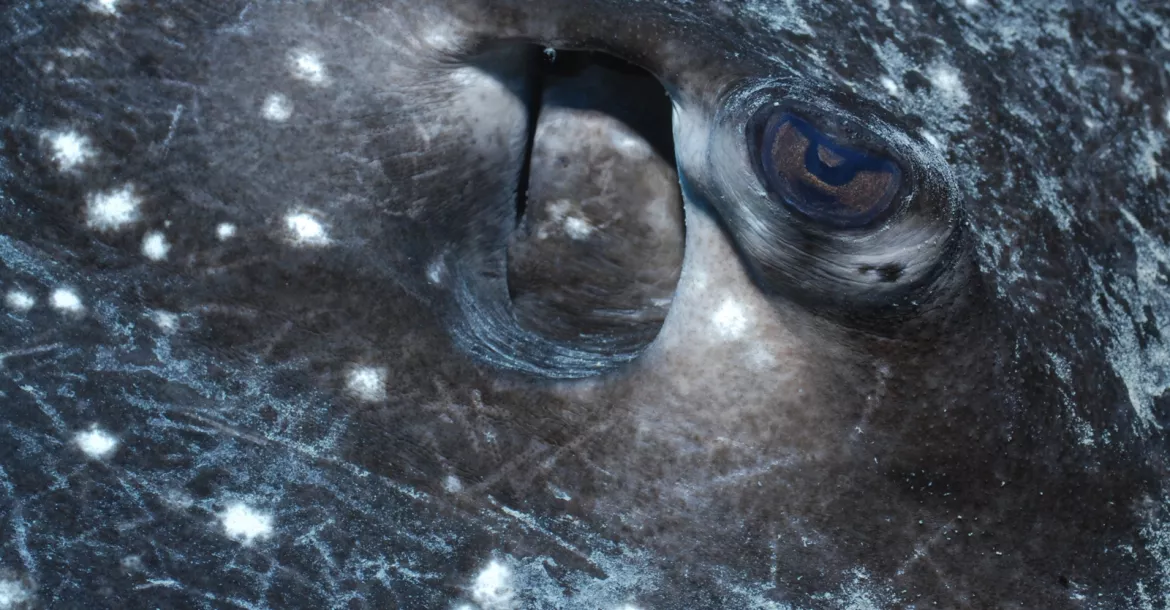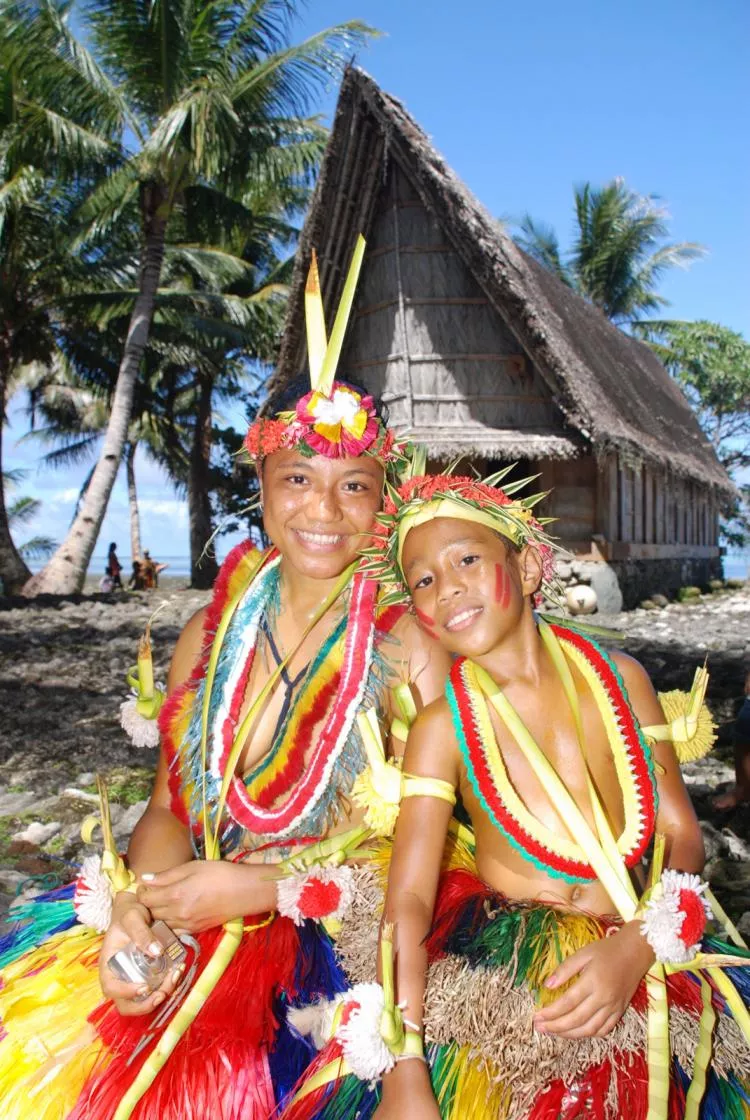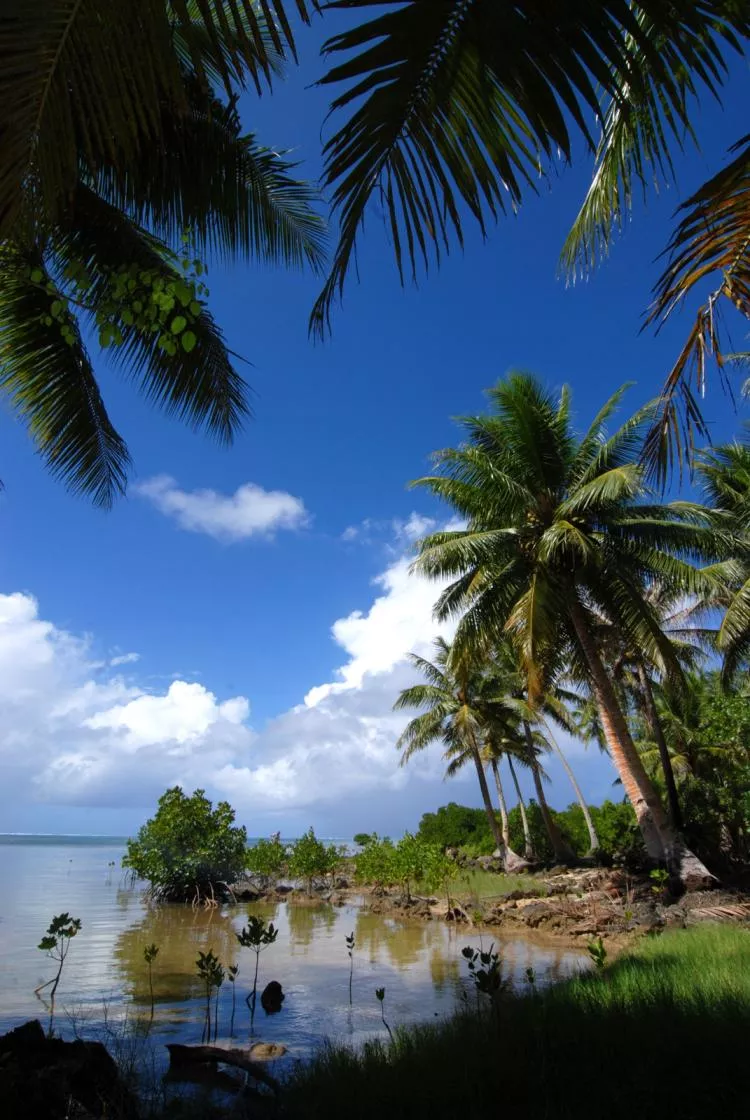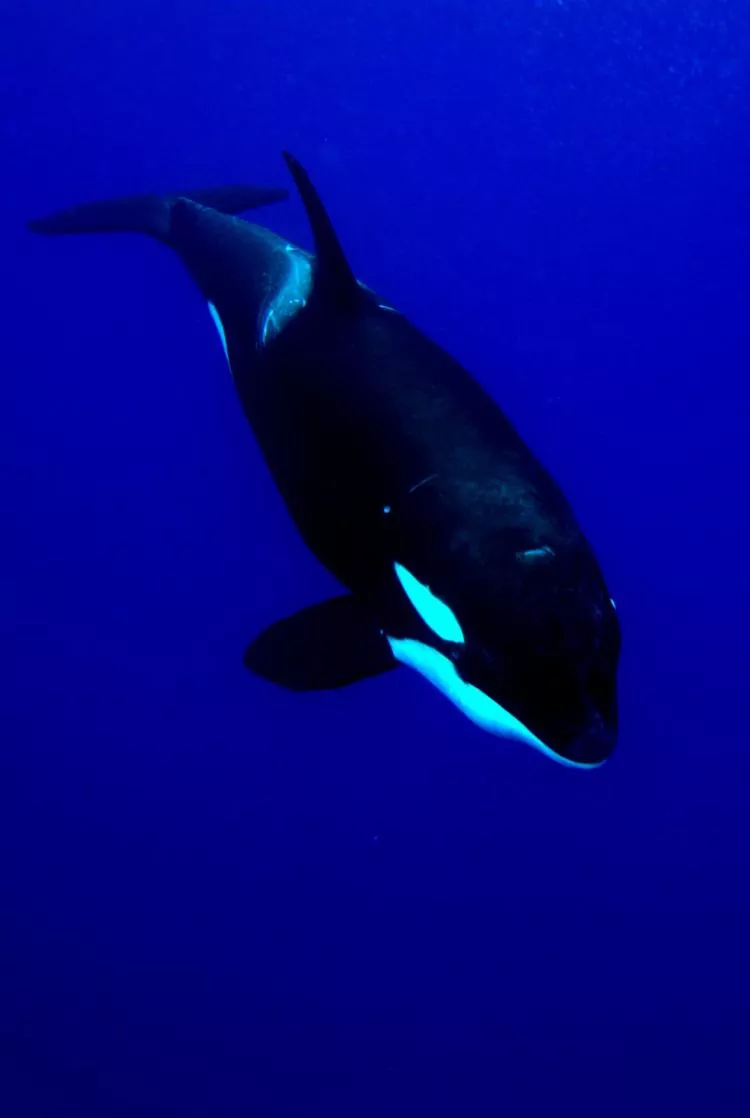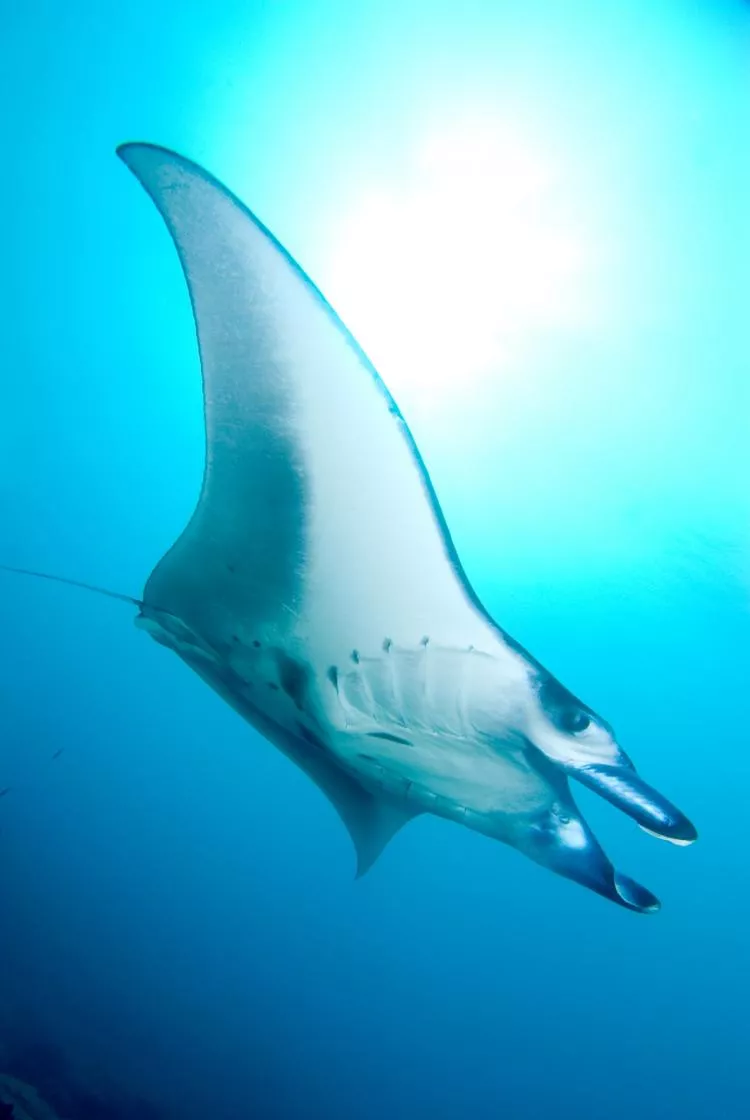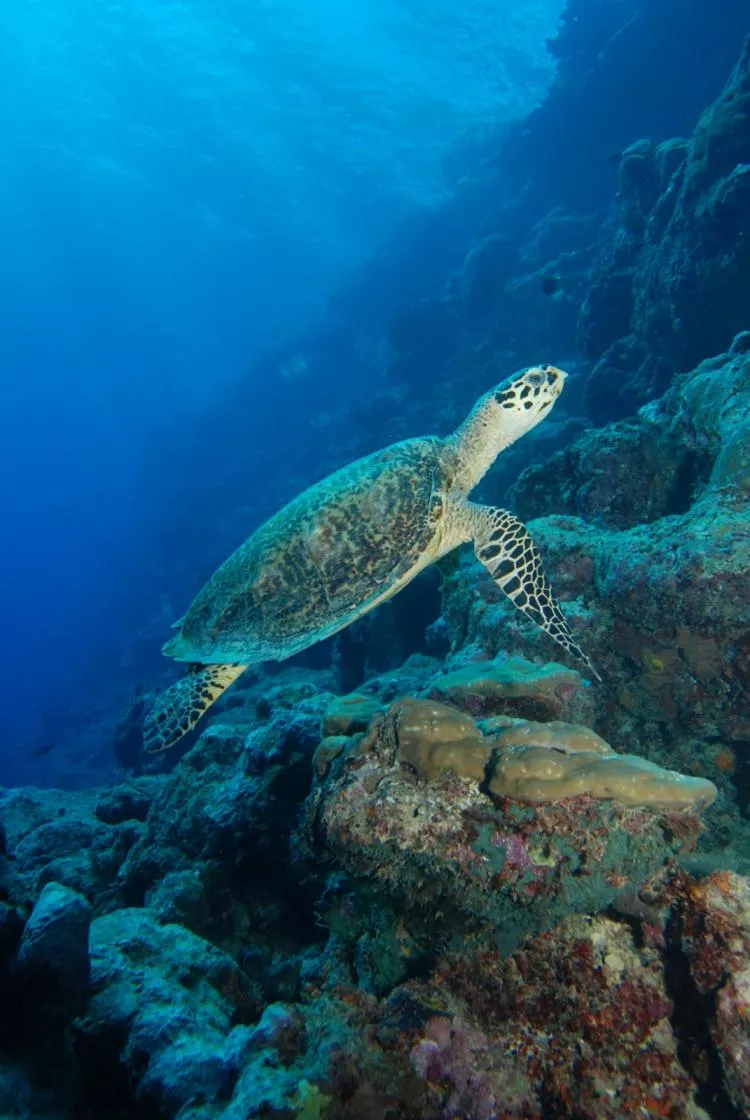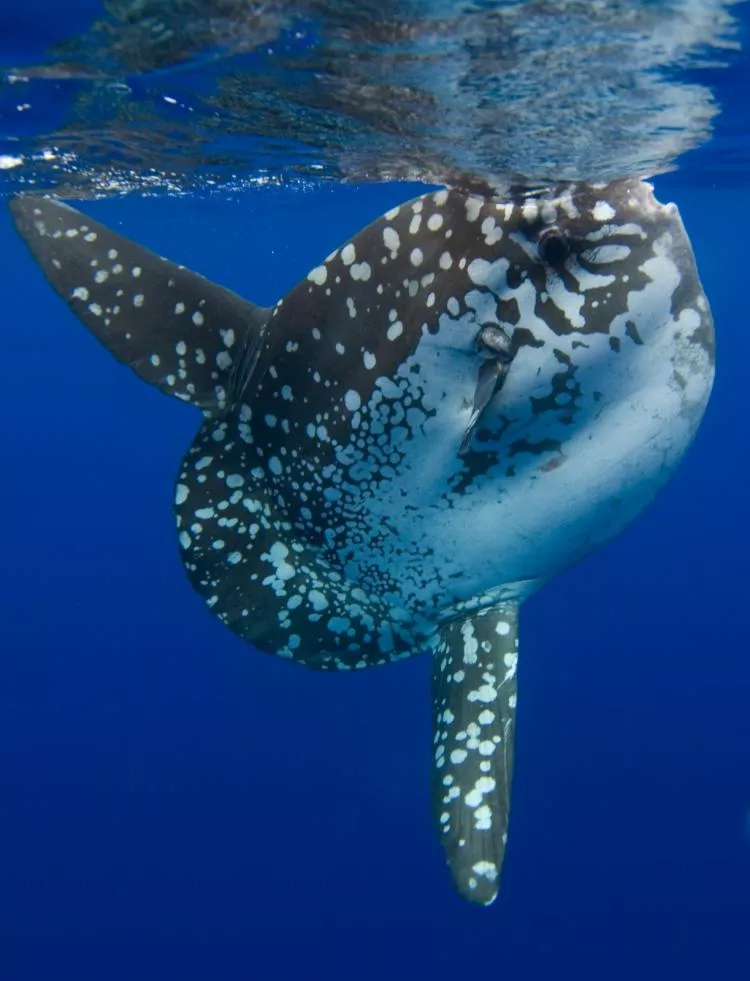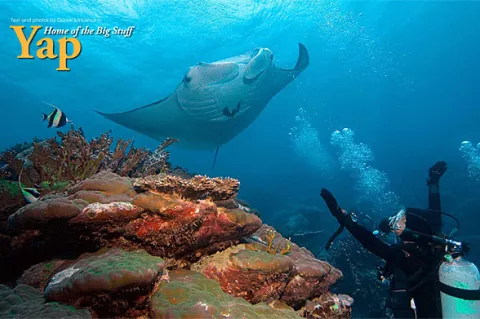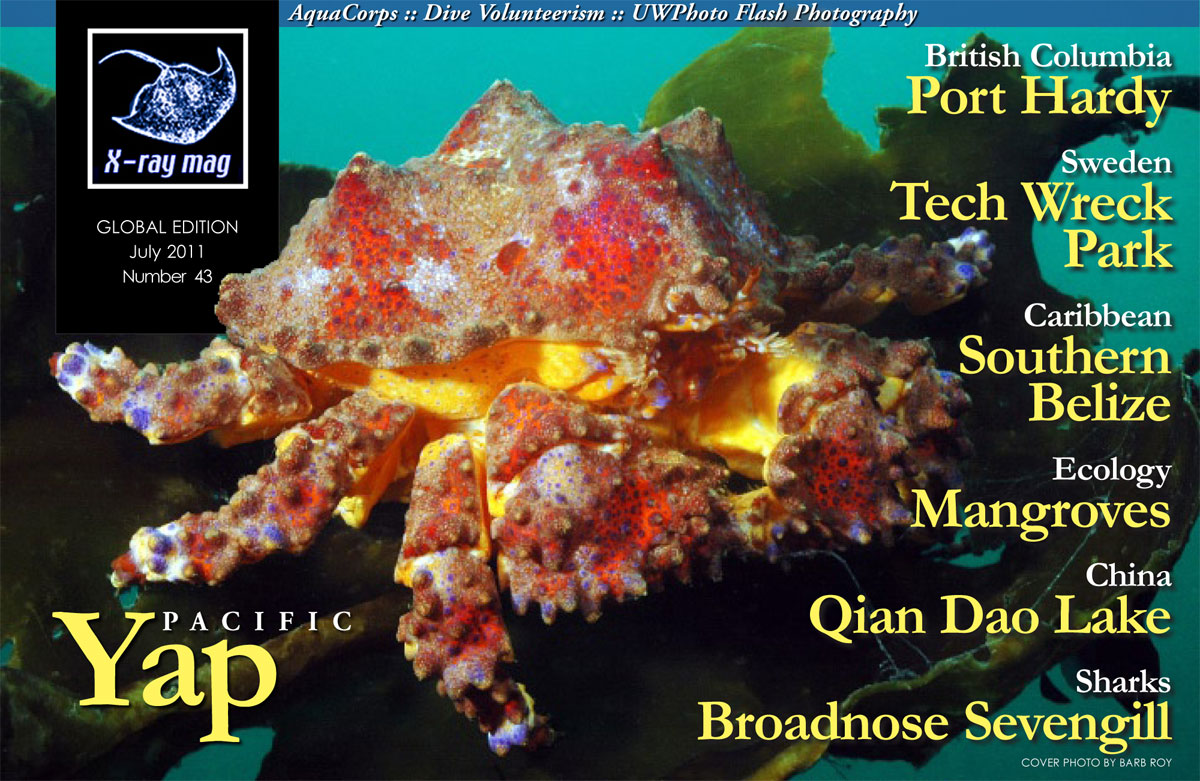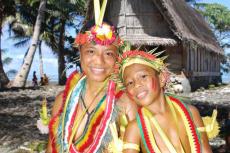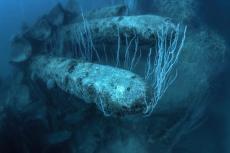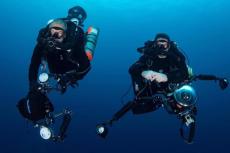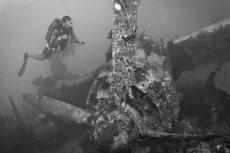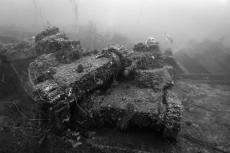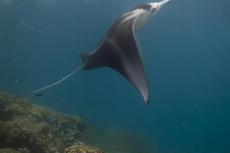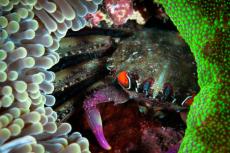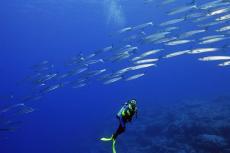You name it and you know it—the itching and scratching in the morning, those five minutes of mini breakfast, the coffee swallowed so quickly it burns your throat—all for the anticipation of the adventure to come. The Big Game.
Every experienced diver knows that feeling, but hardly anybody is able to describe the notion just why one feels a certain day is gonna be the very special one. Probably the most intriguing thing about my "day of days" is that none of the above happened. Actually, it started out worse... much worse.
Contributed by
The evening before, dive center manager, Jan Sledsens, and Bill Acker, the owner of Manta Ray Bay Resort in Yap, assembled in front of the weather forecast on the internet. The worried looks on their faces said it all: one typhoon was coming in from Guam in the North, one from that coral patchwork in the East they call the Outer Islands of Micronesia, and finally the last one from the Philippines just after it left Manila flooded and devastated. "This could be too much for the 56 square kilometers that Yap is," said Bill after taking a deep sip from his beer mug. "The day after tomorrow, we need to tug in the jetty and get the resort storm-proof."
The next morning, the tropical paradise greeted us with its grim face, it was raining cats and dogs, and instead of rushing off to dive boats, everybody seemed to be glued to their coffee cups. Shrugging his shoulders, Jan said: "Okay guys, let’s go. The other guests are waiting for their mantas."
The giant rays, one has to know, are Yap’s pleasure and pain, at the same time, since many guests are just keen on their flying carpets and ignore even the sharks, the reef and everything in between. Adding insult to injury, no mantas had been seen in the last two days, and everybody was pushed to the limit to get the guests "their“ mantas.
Green water engulfed us as we navigated through Goofnuw Channel, in the middle of the Valley of Rays. We could hardly find the cleaning station. Even though the water was blooming with plankton, there were no mantas around. "Why didn’t I just stay in bed," I thought, but in the next moment, the tables turned.
Driven by an invisible force, a strong current came in from the open ocean, clearing up the water by more than 20 meters. And with the clear blue water—surprise, surprise—came the mantas. One, two, three, four—one by one, they glided over the rocky channel bottom and rose up to the cleaning station next to our heads.
From the V-shaped blotches on her belly, I recognized Valerie, one of the "friendliest" mantas in Yap, that has a very special habit. Swimming a long curve, she passed me and hovered on top of my buddy’s head, going deeper and deeper until she basically sat on top of his head. Valerie just loves the tiny air bubbles from the regulators. No doubt, if she was human, Valerie would spend her days in a jacuzzi. Mission accomplished! I could almost hear dive center manager Jan sighing in relief.
Pretty much to our surprise, the other mantas also remained motionless. As if they hung on transparent wires, they did not even bother to move a single tip of their black wings. Maybe they saw them coming earlier than we did: a bunch of grey reef sharks made their way up the channel, of course, not without taking a closer look at the foreign intruders.
As cool and as bold as they appeared to be, their lively eyes were rolling and revealed that they were not about to miss the slightest movements on our part. For some people, the sharks ventured closer than they had ever wished.
Orca time
Ninety minutes after we jumped in, we finally breached the surface with nearly empty tanks. The second boat which had just arrived, brought news: "Guys, we‘ve seen a couple of orcas just in front of the main channel," said Captain John with a calm smile, as if to suggest that the movie he‘d just watched wasn’t too bad.
Initially, everybody started cracking jokes: "Sure, orcas, here in the tropics, we call ‘em spinner dolphins, my friend! Let’s go for them, and after that, you get us a school of tiger sharks feeding on floating coconuts." However, jaws dropped when John showed us a video on his mobile phone with an orca looking curiously up to the dive boat’s bow.
Five minutes later, the plans for any further dives were put to rest for the day, and we were going out with roaring engines. Orca time! "This is like looking for a needle in the hay," I thought to myself, hoping for the best and expecting nothing at all. And there they were—three dorsal fins sticking high out of the water like swords in the air.
"Could I? Would I? Should I?" Before I started thinking too much about the risky part of sharing the water with wild orcas, I grabbed mask, snorkel and fins and slid into the water as calmly as possible. "If they take me for an alternative to Hawaiian monk seals or whatever else, then so be it."
But just like it is most often with so-called dangerous animals, the orcas immediately fled as soon as we saw a glimpse of them. However, the first five attempts proved to be not fruitful at all. All the way we saw nothing but wonderful transparent blue water... up to the moment when a huge black body of at least six meters appeared as if it came out of nowhere.
Resembling a big black torpedo, one of the adult Orcas came on a straight head-on course towards me. I think my heart stopped beating for a second! A heartbeat later, it approached me for a quick sonar scan and quickly passed below my fins. There are hardly words to explain how it felt to be in the water with such a big animal, without a reef at your back, a tank on your back, or even a buddy close to you.
Let’s say, it is less frightening than just overwhelming, because you are so much struck by the fact that there is no space for fear in your brain! Needless to say, once we climbed the ladder back onto the boat, we all enthusiastically started shouting, probably so loud even the seagulls were scared away.
In this happy mess, it turned out that the others counted four animals, including a small calf. What a day. From then on, we saw them only a few times, even though our approach got a little more professional—jumping into the water and going after the whales at full fin power obviously did not do the job.
You could fin forever, as some red faces indicated, but the animals were always faster even though they did not seem to move at all. We found ourselves in a much better position when we stopped the boat 20 meters in front of them, got into the water, just hoping they would not change their direction. Quite often, we would see them swimming past us 10 to 15 meters away. In fact, they tended to keep this distance, which did not make things easy for me, as I was equipped with a strong wide-angle lens.
Looking through the viewfinder, the orcas reminded me more of sardines than of properly sized whales. The case seemed to be clear—taking into account that the bull and the cow had a semi-adult and a calf of not more than two meters with them, it was obvious that they were looking for shelter in relatively shallow and safe water just off the outer reef wall in order to protect their young one from predators like tiger sharks.
This said, everybody knew that orcas normally tend to stay and feed in cooler water with only a few exceptions off the Great Barrier Reef and Papua NewGuinea.
The next resident population from Yap lives around Okinawa in south of Japan. Still a good share of miles to swim. So, could it get any better at that point? Yes, indeed it did! Not only were we able to track the orcas for the next two hours and spend a few minutes with them swimming in the distance, we saw another high dorsal fin in between the whales when we followed them around the southernmost point of Yap to the west side. "A fifth orca?" somebody thought out loud.
Sunfish fun
Sliding into the water once again, we immediately saw the orcas playing with a massive sunfish before they noticed us and changed directions. And while all of the snorkelers were going after the whales, I rushed after the sunfish with the camera housing in increasingly aching arms.
Running out of air and cursing the cigarettes from last night, I noticed a small boat approaching. "Hey, wanna ride?" a familiar face shouted. It turned out to be a local marine biologist I briefly met. He threw a line over board, towed and dropped me just in front of the sunfish.
This was my moment—for the next ten minutes, nobody disturbed my tête-à-tête with the beautiful spotted giant. Having seen a number of sunfishes off Estartit and the Azores islands, I can say that this animal had the greatest coloration of all. Certainly it was not the brightest of them. He really did justice to the reputation of a fish with a walnut-sized brain and ran me over with flapping fins more than once.
Once the other seven snorkelers arrived with the boat, the sunfish quickly became more shy, went horizontal and started spinning. One could tell the animal started to feel stressed, so I decided to leave it alone just to be approached by two bottlenose dolphins for a quick hello.
On board, photo buddy Andy Sallmon gave me a big thumbs up: "You lucky bastard," he yelled while hugging me. "Congratulations on this excellent sunfish footage." Not the worst compliment from a veteran underwater photographer, who took his first pictures by the time I learned how to walk.
With increasingly rough sea and clouded skies it took us more than half an hour to find the orcas again and decide to head for the coast before we run out of fuel.
Back in the dive center, happy insults are flying. "Now, I hate you even more than I did before—I haven’t seen an orca in Yap for ten years," joked Bill, Manta Ray Bay Resort’s owner. "I should send you back to f*****g Germany!"
Needless to say, the evening went by much too fast with beer from the house brewery flowing like a waterfall, and the best footage surfacing on the restaurant ship’s five-meter outdoor screen. "Two mantas, whitetips, at least five grey reef sharks, four orcas, a sunfish and two bottlenose dolphins," I thought to myself with a beer in my hand, “This is what I call a good quota!" Cheers!
Take two
Of course, by that time, the seed was planted into the mind of all those who did not have the chance to the see the whales. So, against all odds and the weather, we went out again the next morning.
After roaming the southernmost point for a while, we found them. To our surprise, one of the adults was missing, but they did not turn away like before—they just ignored us, if we did not get too close. Being the smart animals they were, they really seemed to become more familiar with the boat and those strange humans in rubber suits watching them from every angle possible. Unfortunately, the cloudy weather and the waves swallowed the last beams of light below the surface, leaving me with low contrast and dark blue water like ink.
While the conditions did not improve a bit the next morning, we could see the whales really showing off their playfulness. Instead of us approaching them, it was them approaching us, with splashing black and white fins so close to the boat we all got a shower.
The group of Swiss guests on board could hardly believe their eyes and decided to leave the close encounter underwater to me. As it started raining heavily, I was surprised to even see the orcas coming, thanks to their white bellies. Surprise again—they all came towards me upside down and clearly communicating with each other. It really seemed as if the parents decided to show their calf the strange beings that we must be to them. As if to say: “Look, these little humans are not dangerous, they produce bubbles just like us."
Evidently, at this point, the four whales were not uncomfortable with our presence anymore. Maybe it should have rather been me who feel uncomfortable sharing the water with predators that outgrow a great white shark? Anyway, the Swiss guys slowly dared to go into the water. In the best cartoon style, one by one—with every jump into the water—there was yet one more snorkeler.
Whales, whales, whales...
Leaving the orcas aside for a moment, the true miracle was maybe not even them, but the three typhoons. They could have devastated the island and the surrounding reef, but they all changed directions less than a hundred kilometers off the island. Still the wind and two-meter waves forced us back to the shore, where we decided to go on an island trip.
During our visit in Kaday Village we were surprised to learn that "our" orcas were old news. Stan Fillamed, a 69-year-old fisherman from the village really made our day. "You mean, these black and white whales? Yes, of course we know about them," he said and left us with mouths wide open. "They have been around for almost one month now and always try to steal our hooked tuna."
With stars in his eyes he recounted how one of them jumped out of the water with a shark in his mouth. "Having a really great head-on shot of this would be a good reason to sell all of my equipment and quit diving," I thought. Actually, Stan wondered that we did not hear about the "small whales with the round fins" as he names them.
Back at the hotel, we asked Bill about it and earned shrugging shoulders: "Yes, there is a group of pilot whales living around the island, but you never asked for them, and I thought you‘d rather go diving than spending the day on the sea searching them." If we could only speak "whale" and invite them on a few fishing trips...
Manta Visions
The pioneering dive centre of the island, Yap Divers, harbours the photo and video centre, Manta Visions, and plenty of dry storage room for housings and other equipment. Or, to put it in a nutshell—16 booths, each equipped with electric looking glasses, a charging station with three 220V European style sockets, as well as three 110V US-style sockets and a spacious locker unit. Over the years, pros like Eric Cheng, Marty Snyderman, Andy Sallmon and Bob Halstead rubbed shoulders at Manta Ray Bay Resort, as well as many TV crews up to National Geographic.
Apart from the decent infrastructure for us lens geeks, the resident videographer and manager of Manta Vision is another good reason to pick Manta Ray Bay Resort in Yap. Peter Schneider, originally a cameraman for German public TV in Berlin, worked with the likes of Christian Petron (Luc Besson’s film, The Big Blue) and won an award for his film, Sharks of Rangiroa, from Legend to Reality— an uncompromising manifesto against shark fishing, which effectively triggered a federal ban on finning in the Southern Pacific in 2006.
Schneider was also the first to capture not only the mating of manta rays, but their actual copulation in the wild. Not only were his frames used by National Geographic and Discovery Channel, nine years in French Polynesia made him also an expert of marine life in the tropical Pacific. In short, ask him what subject you need and how to get it, and he will very likely bring it to the table—not only the big classics, such as sharks and mantas, but also mating mandarin fishes, white mantis shrimps and a colorful array of leaf fishes just to name a few.
Next August, Schneider will also host the MantaFest shoot-out along with fellow pros Tim Rock, Frank Schneider and—once again—Marty Snyderman.
While there are no docking stations at Manta Visions to catch an immediate glimpse of one's photographs, Yap‘s reputation for "big stuff" extends to the screening of images—the restaurant ship beamer screen measures no less than 18 feet and is used for the display of the day's best images and frames virtually every evening at dinner time—a perfect opportunity to sneak in and connect your notebook while you‘re waiting for your blackened sashimi. ■
About the author
Daniel Brinckmann, 31, started diving at age 11 and published his first travel story in a German scuba diving magazine prior to his final exams at school. He then went for journalism and media studies and English at Düsseldorf University.
Throughout this period, he worked as a freelancer for the county capital's daily newspaper as well as for other scuba diving magazines. Following his university career, he decided to focus on travel reporting full-time and now works for 11 magazines throughout Europe.
His motto: "There are no boring dive spots. SOMETHING can even be found in a dirty little pond, even if it is only a withered lighter with small shells on top!" Photo equipment used by the author includes 2x D90 with 2x Ikelite DS-160/161, Tokina 12-24mm, Sigma 50mm, Sigma 105mm.
Published in
- Log in to post comments

